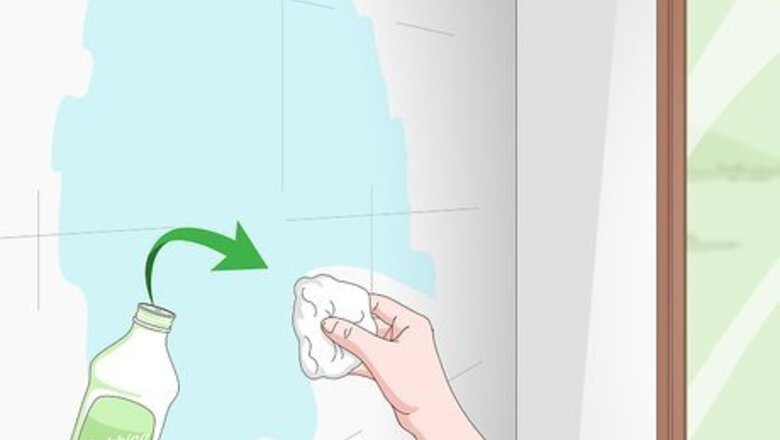
views
Attaching Hanging Strips for Light Mirrors
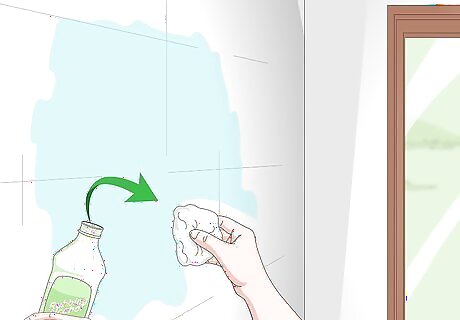
Wipe down your mirror location with tri-sodium phosphate (TSP) or rubbing alcohol. Start by applying a small amount of TSP or rubbing alcohol to a dry microfiber cloth. After doing this, wipe down the entire surface that you plan to hang your mirror onto. Purchase both TSP and rubbing alcohol from big-box stores, pharmacies, and online suppliers.
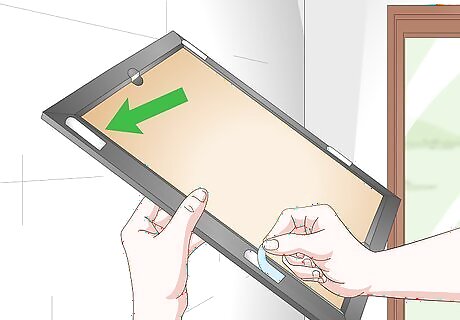
Attach 4 adhesive strips to the mirror. Use hanging strips for drywall or plaster walls. Select strips that are adhesive on 1 side and have Velcro on the other. Remove 1 liner from 1 sticky side of each of your double-sided strips and attach them to your frame. Always hang them vertically on the left and right for the best results, with 1 at the top right, 1 at the top left, 1 at the bottom right, and 1 at the bottom left. If they're not in pre-cut strips, give yourself around 3 to 4 inches (7.6 to 10.2 cm) per piece. Follow the manufacturer's instructions for your brand of tape for specific directions.
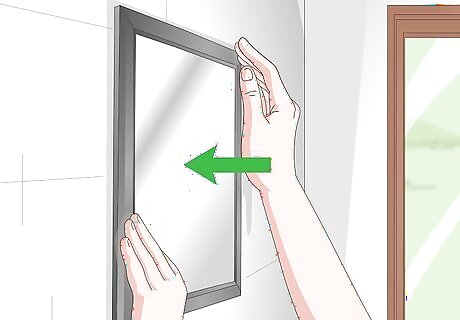
Stick the mirror to the wall. Remove the remaining liners on the double-sided tape. Then, align your mirror exactly where you want it and then press the frame to the wall firmly. Hold the mirror in place for 30 seconds before removing pressure.
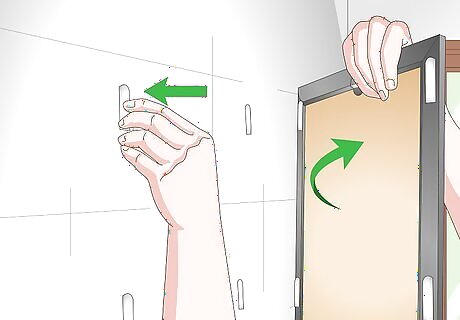
Remove the mirror from the wall and press on the strips. To ensure that the adhesive holds properly, remove the mirror from the wall to pull each strip apart at the Velcro. After this, check that there are 4 strip pieces on the wall and 4 on your mirror, each with the Velcro side exposed. Now, press down on each strip stuck to the wall and hold this pressure for 30 seconds. Be sure to press firmly when applying pressure to ensure adherence.
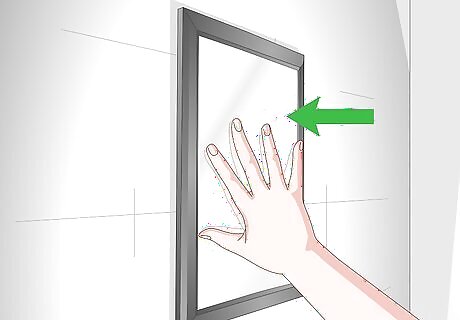
Reattach your mirror after 1 hour. After pressing the strips against the wall, wait 1 hour for the glue to bond. Once this time has passed, align the strips on the mirror with the strips on the wall and press the frame onto them. If the strips are loose, remove your mirror and apply pressure again for 30 seconds. Afterward, wait another 1 hour.
Using Hooks for Heavy Mirrors
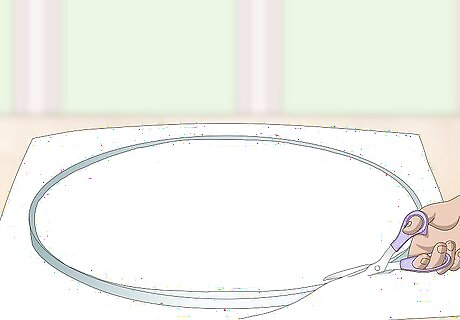
Cut out an outline of the mirror with a piece of paper. Place a piece of light paper over the back of your mirror. Now, use a pair of scissors to cut around its perimeter and create an outline of the mirror from your paper. Try to cut the paper as close to the size of your mirror as possible. Purchase paper from a big-box store or online supplier.
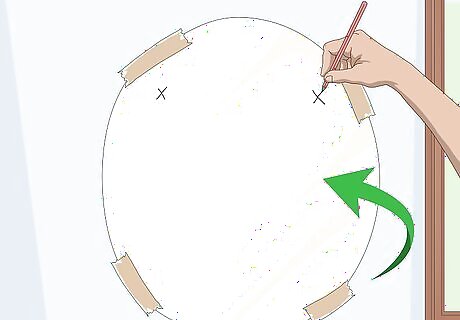
Mark the hole locations using your paper as a guide. Start by taping the paper to the wall in the location you want your mirror to be. Once it's in the right position, mark off spots for the holes by pressing your pencil through the paper. Always put the holes on the top edge of the mirror an equal distance from the edges. For example, if your mirror is 10 inches (25 cm) long from left to right, position a hook 1 to 2 inches (2.5 to 5.1 cm) from the left side and 1 to 2 inches (2.5 to 5.1 cm) from the right side. You can also try positioning just 1 hook in the middle. Take care to get your paper aligned exactly where you want it before marking the holes off. In general, only 2 small holes are necessary.
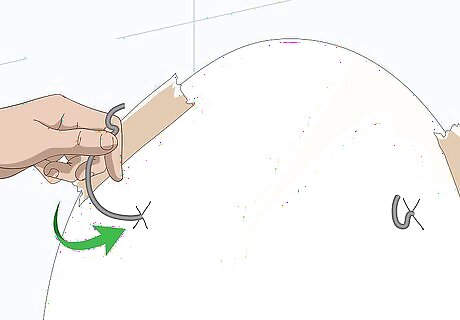
Push the picture hooks into the wall right-side up. Take each hook and push the end without a hook slightly into the wall. Next, twist each piece so that the small hook is at the top of the curve and facing upward. Once they're facing the right direction, push the hooks completely into the wall until only the hooks are visible. Head to the picture hanger section of the local home hardware store and purchase steel hooks for a mirror with the given weight. Example products include Monkey Hook, Hercules Hook, or Super Hook. Hooks work best on drywall. However, they also work on plaster, but they will be tougher to get into the wall. Most hooks are about 1 inch (2.5 cm) in length. Make sure that only the hook is exposed from the wall.
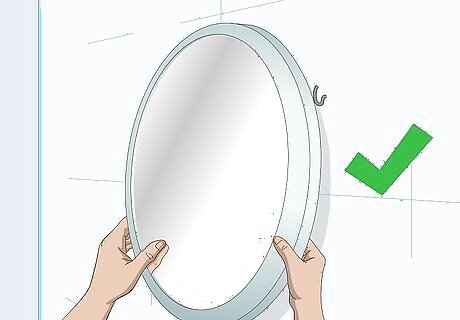
Hang the mirror onto the picture hooks. Align the back of the mirror's frame onto the hooks and lift it over them. Adjust the mirror as necessary until it's straight and make sure it's secure. If you find that your mirror isn't straight, reinstall any hooks as necessary. If your mirror doesn't have a frame, try using hanging strips instead.
Attaching Clamps for Brick Walls
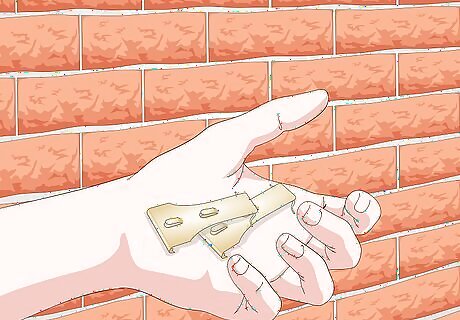
Purchase metal brick clamps that accommodate your brick size. Each clip grips the brick from the top and bottom and the tips of the grips rest against or close to the mortar. Start by measuring the height and width or your bricks as well as the space between each. Now, head to a home hardware store and find clamps that are designed for your bricks. If possible, purchase clamps that come in more than 1 size just in case. Try to select a clip with a spring at the bottom that adjusts for variation in brick size. Be sure to purchase clips that can accommodate the weight of your mirror. Make sure the gap between the brick and mortar is big enough for your clips. For example, many products require at least a ⁄8 inch (0.32 cm) gap.
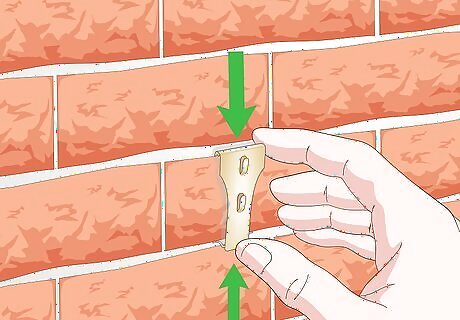
Clip the teeth of your brick clamps over the brick at the top and bottom. Place the spring end of the clip at the bottom of the brick. Now, push the clip upwards to depress the spring until the teeth go over the top of the brick. To remove the clip, compress the spring until the teeth come off the brick.
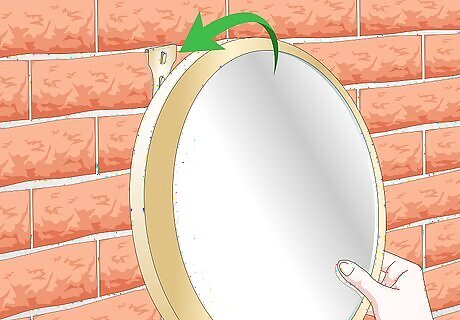
Hang your mirror onto the brick clamp. Place your mirror frame onto the hook of the brick clamp. For smaller mirrors, you can probably just hang it on 1 clamp. If it's a larger mirror, use 2 clamps and make sure they are an equal distance from the edges of the mirror and each other. Move your brick clamps as necessary until your mirror is straight. Be sure that your mirror has a thick enough frame to hang from the brick clamp hook.




















Comments
0 comment